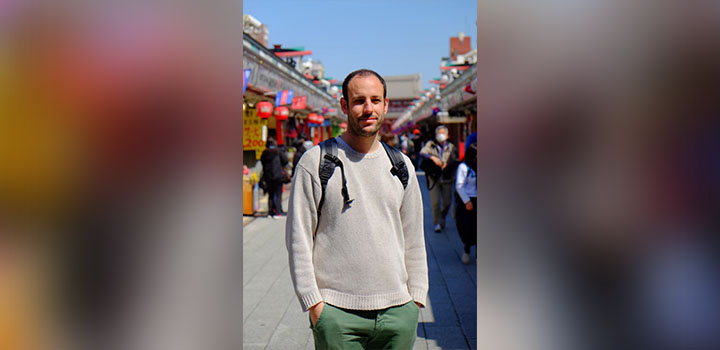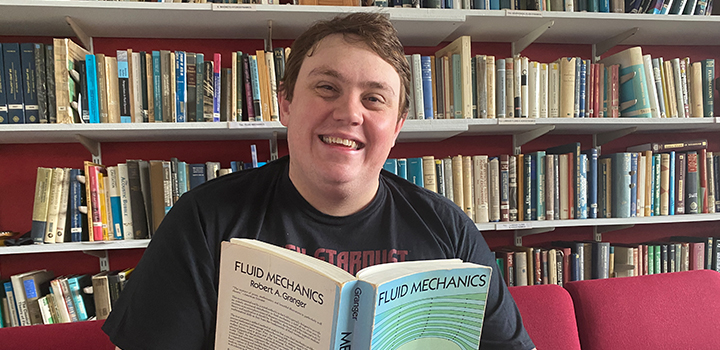The far side of maths
By: Communications

It was during high school first and then university when my fascination for fluid dynamics and the ocean began. When I came across series of lectures by the famous physicist Richard Feynmann, I read that “water waves are easily seen by everyone and usually used as an example of waves in elementary courses … but … are the worst possible example [of waves], because … they have all the complications that waves can have”. It was here that I discovered where the obsession for waves came from. Curiosity. The desire to understand a common, yet complex phenomenon. I went on to do a PhD dedicated to water waves. I focused on mathematical modelling, and in particular how “monster” waves form and break. Mathematicians have spent the last 20 years understanding how waves twice the size of the surrounding sea can apparently come out of nowhere, and are likely the cause of many ships and lives lost at sea.
The advance and retreat of sea ice in Antarctica is the largest annually recurring event on Earth. Sea ice goes from covering 3 million square km (10 times the size of the UK) in March to 20 million square km (70 UK) in October. This cycle regulates the Earth’s climate. The energy of Southern Ocean waves can break the ice and accelerate the melting in summer, or slow down the formation in winter.
In 2017 I joined a two week long winter cruise onboard the SA Agulhas II from Cape Town (South Africa) to the Antarctic sea ice. The expedition brought together experts, from climate to biogeochemistry, and from engineering to mathematics. In sea ice, we measured one wave 8m high from crest to trough. These are the largest waves ever recorded in these conditions. This was my first experience in the Southern Ocean, not the last. In 2019, we organised two voyages to the Antarctic sea ice as part of the project SCALE (Southern oCean seAsonaL Experiment, http://scale.org.za/).
I used wave measurements to inspire the development of a new, more accurate and yet simple model for predicting how much energy waves carry into sea ice around Antarctica. Together with meteorologists and oceanographers, we have done a lot of work, with more needing to be done. In July 2022, I was back in South Africa for yet another wavy cruise, and by now I was one of the most seasoned researchers on board.
Looking forward, I will be back in Cape Town in 2023 to work with colleagues at: the University of Cape Town, Stellenbosch University, Cape Peninsula University of Technology and the South African Weather Service thanks to the support of the London Mathematical Society. We will be testing the mathematical models for waves and sea ice motion that we have developed so far against our most recent dataset and try to improve them.
Related Articles

Innovation and Impact Awards now open for entries and nominations
The Innovation and Impact Awards are back for 2025 and looking to recognise and reward UEA’s most game changing staff, students, and graduates, and their collaborative work with partners outside the University.
Read more
Jared’s journey to becoming an inspiring maths master
Jared Carpenter, from UEA’s School of Mathematics speaks about his fight for education, the University’s support, and his hopes to inspire other autistic students.
Read more
UEA mathematician wins Hausdorff medal
Dr David Asper, Associate Professor of Pure Mathematics, has been awarded the Hausdorff medal by the European Set Theory Society, together with his co-author Dr Ralf Schindler and they collected the award at the European Set Theory conference in Turin (It
Read more